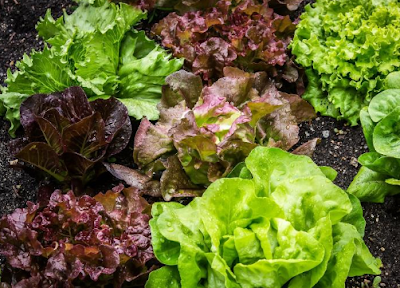Among the salad crops, the garden lettuce is the most popular vegetable grown on a commercial scale. This is a tall annual leafy herb with a milky juice. It produces a short sitcom early in the seem, cluster of leaves varying considerably in shape, character and colour in different varieties. Later in the season a seed stalk is produced. It thrives best during the coller parts of the growing season and to be of the highest quality. It is almost entirely self pollinated crop.
Uses and Nutritive Value:
Lettuce is a nutritious leafy vegetable, rich in mineral and a source of vitamin. It is now considered as the most important salad crop and used particularly as the base for salad. It is anodyne, sedative, diuretic and expectorant. Its seeds are cooling, demulcent and refrignant, while its leaves are slightly lypnotic and sedative.
The composition of lettuce is as follows:
1. Edible Portion: 66 %
2. Mositure: 93.4%
3. Protein: 21 g
4. Fat: 0.3 g
5. Mineral: 1.2 g
6. Fiber: 0.5 g
7. Other carbohydrate: 2.5 g
8. Calories: 21
Minerals:
1. Calcium: 329 mg
2. Total Phosphorus: 80 mg
3. Total iron: 2.6 mg
4. Riboflavin: 0.13 mg
5. Nicotinic acid: 0.5 mg and
6. Chlorine: 178 mg.
History and Origin:
Lettuce has been cultivated fro more then 2500 years. Cultivated lettuce originated around Asia Minor. Iron and Turkistan. Lettuce is an annual crop and belongs to the family Compositae.
Climate:
Lettuce dose well in a relatively cool growing season with a monthly average temp, of 12.8 to 15.6 C. higher temperature induce bolting and cause bitter taste in the leaves and accelerate the disorder ‘tipbrun’ and rot. Seed germination is alos affected at temperature above 27 0 C.
Soil:
Lettuce will tolerate a variety of soil but performs best when grown on a rich friable and well drained soil. Soils rich organic matters have a high water holding capacity and ensure uniform moisture supply. These conditions are best suited for it, as it has a very shallow root system.
Lettuce is sensitive to high acidity. The best soil reaction is PH 5.8 to 6.6. the yield is low at PH 5 or above 7.
Manuring:
The lettuce plants have mostly surface roots. The surface soil, therefore, should be well supplied with nutrients. The fertilizer requirements will vary with the soil. Usually 10-15 tones of FYM, 85 kg N , and 60 kg each of Potash and Phosphorus per ha when give good results.
Sowing:
The main sowings are done after rains. i.e early October to November. Leaf types are sown either directly on moist soil or started in a nursery and later transplanted. Since the seeds are tiny , the land is prepared thoroughly and seeds are sown in rows 15 to 25 cm part. Dropping the seeds very close together and 1 cm deep and later thinned to 3 cm and when these begin to crowed alternate plnats are removed fro use. Seed rate is 2 ½ kg per hectare.
The nursery sowing is done. In September- October and transplanted when the seedlings are 5 weeks old. They are planted 20 to 25 cm apart in rows which are 30to 40 cm apart. About 0.5 kg of seed required for raising seedlings for one hectare.
Germination is affected by temperature. Lettuce seed germination at a range of temperature bunt the optimum is 18- 21 0 C.
After Care:
Hoeing and weeding are intermittently done for proper aeration and keeping down the weeds. The cultivation should be very shallow since the crop has root system near the surface of the soil.
Water should be supplied to keep uniform moisture condition in the soil. A frequency of 4 to 7 days may be enough for each irrigation. Drainage is as important as supplying irrigation, for excess of soil moisture may cause rooting.
Harvesting:
Leaf varieties are harvested when the leaves are tender and immature. First harvesting is done 35 days after sown. In case of head varieties the crop is harvested when it has attained a good size and solid head. While handling care should be taken not to damage the wrapper leaves.
Yield:
The yield per ha is 10,000 to 12,000 kg in case of head lettuce. Open leaf types generally give comparatively higher yields.
Storage:
Lettuce can be kept for 2- 3 weeks at 0 C and 90- 95 % RH.
Seed Production Technique:
Lettuce is mainly self pollinated crop. There is on there is no difficulty in the production of seeds at the leafy varieties. All the seeds do not ripe at the same time in it, so they should be collected as they ripe. The seed harvesting is completed by the end of May.
The leafy types produce about 500- 600 kg whereas, the variety great lakes produce only about 100 to 125 kg per ha.
source : http://agriinfo.in/default.aspx?page=topic&superid=2&topicid=956


0 Response to "Lettuce Cultivation"
Posting Komentar